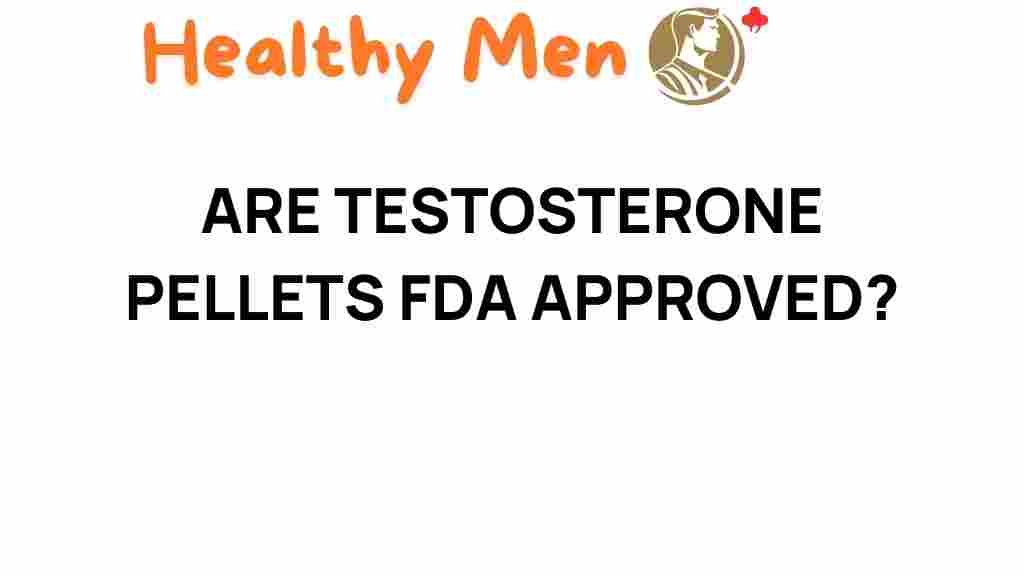Unveiling the Truth: Are Testosterone Pellets FDA Approved?
In recent years, the discussion surrounding testosterone pellets and their role in hormone therapy has gained significant attention. Many men experiencing symptoms of low testosterone levels are turning to testosterone replacement therapies, including pellets. However, a critical question remains: Are testosterone pellets FDA approved? In this article, we will delve into the world of testosterone pellets, exploring their FDA approval status, implications for men’s health, and the broader context of hormone therapy.
Understanding Testosterone and Its Role in Men’s Health
Testosterone is a vital hormone primarily produced in the testes that plays a key role in various bodily functions, including:
- Regulating libido and sexual function
- Maintaining muscle mass and strength
- Supporting bone density
- Contributing to mood and mental clarity
As men age, testosterone levels naturally decline. This decline can lead to a range of symptoms, including fatigue, depression, decreased libido, and reduced muscle mass. For many, hormone therapy becomes an appealing option to restore these levels and improve overall quality of life.
What Are Testosterone Pellets?
Testosterone pellets are small, rice-sized implants that are inserted subcutaneously (under the skin) to deliver a steady dose of testosterone over time. This method allows for consistent hormone levels without the need for daily administration like pills or regular injections.
Typically, testosterone pellets are inserted in the hip or buttock area and can last from three to six months, depending on the formulation and individual metabolism.
FDA Approval Status of Testosterone Pellets
One of the most important aspects of any medical treatment is its regulatory approval. The FDA (Food and Drug Administration) is responsible for ensuring that medications are safe and effective for public use. Currently, the FDA has approved certain testosterone products, but the approval status of testosterone pellets is more nuanced.
While testosterone pellets, such as those produced by companies like FDA-approved pharmaceutical manufacturers, have been used clinically, they were not always subjected to the same rigorous clinical trials as some other testosterone replacement therapies. This has led to debates about their safety, efficacy, and the potential for misuse.
Medical Regulations and Patient Safety
The FDA has established medical regulations to protect patient safety when it comes to hormone therapy. Physicians must adhere to these guidelines when prescribing testosterone pellets. Here are some key points regarding medical regulations and patient safety:
- Prescription Requirement: Testosterone pellets must be prescribed by a licensed medical professional who has evaluated the patient’s hormone levels and symptoms.
- Monitoring: Regular follow-up appointments are essential to monitor testosterone levels, potential side effects, and overall health.
- Informed Consent: Patients should be informed about the benefits and risks associated with testosterone replacement therapy.
Due to the lack of comprehensive clinical trials specifically for testosterone pellets, it is crucial for patients to discuss all potential risks and benefits with their healthcare provider.
Alternative Treatments for Low Testosterone
For those concerned about FDA approval or the potential risks associated with testosterone pellets, there are alternative treatments available for low testosterone. Some of these options include:
- Testosterone Injections: Administered intramuscularly, these provide a quick influx of testosterone and can be done every few weeks.
- Topical Gels: Applied directly to the skin, these allow for daily absorption of testosterone.
- Oral Medications: These are available but may have more significant side effects compared to other methods.
Choosing the right treatment depends on individual preferences, lifestyle, and medical history. It’s vital to work closely with a healthcare provider to find the most suitable option.
Step-by-Step Process for Getting Testosterone Pellets
If you decide to pursue testosterone pellets, here’s a step-by-step guide on what to expect:
- Consultation: Schedule a visit with your healthcare provider to discuss symptoms, medical history, and undergo necessary tests to measure testosterone levels.
- Diagnosis: If low testosterone is confirmed, your doctor will discuss the benefits and risks of testosterone replacement therapy, including pellets.
- Insertion Procedure: If you opt for pellets, a minor surgical procedure will be performed to insert the pellets under the skin. This is usually done in the office and involves local anesthesia.
- Post-Insertion Care: After insertion, you may experience some swelling or discomfort. Your doctor will provide instructions for care.
- Follow-Up Visits: Regular follow-ups are essential to monitor testosterone levels and adjust treatment as necessary.
Troubleshooting Tips for Patients
While testosterone pellets can be beneficial, some patients may encounter issues. Here are some troubleshooting tips:
- Irregular Hormone Levels: If you feel symptoms of low testosterone despite treatment, consult your physician about adjusting the dosage or frequency of pellet insertion.
- Injection Site Reactions: If you experience excessive swelling or infection at the insertion site, contact your healthcare provider immediately.
- Side Effects: Monitor for potential side effects, such as mood changes or changes in libido, and discuss any concerns with your doctor.
Conclusion
In conclusion, testosterone pellets offer a convenient option for testosterone replacement therapy, but their FDA approval status and the associated medical regulations warrant careful consideration. While they can significantly improve quality of life for men suffering from low testosterone, it’s essential to prioritize patient safety and informed decision-making.
As with any medical treatment, discussions with healthcare providers about the best options for individual needs are crucial. Whether considering testosterone pellets or exploring alternative treatments, being well-informed and proactive about your health can lead to better outcomes in managing testosterone levels and overall men’s health.
For more information on hormone therapy and testosterone replacement, consult reputable sources or speak with your healthcare provider. Remember, your health is your most valuable asset.
This article is in the category Conditions and created by healthymen Team
